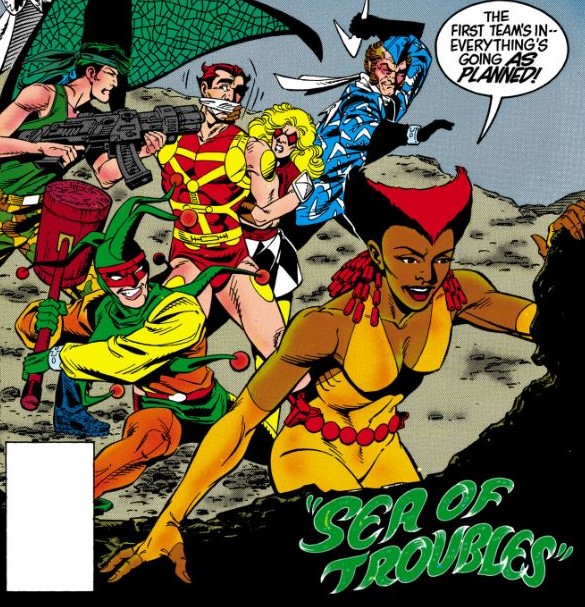
Hello again, folks! Today, I’m going to be reading through volume three of the Suicide Squad from 1987. This includes Suicide Squad #17-#25 and Suicide Squad Annual #1. If you randomly come across this article and are confused, you can get caught up here. If you missed the last article where I discussed volume two, you can check it out here. This next volume is a bit of a reckoning for our titular Squad, so let’s dive right in!
Suicide Squad Annual #1
The series’ first annual issue contains two stories, though the second feels more complete than the first. This issue concerns the whereabouts of Argent, the civilian side of Task Force X mentioned in Secret Origins #14 (1986). The story is well-paced and includes a bit of political intrigue, but the ending feels rushed and unsatisfying. Instead, it’s watching the Squad work like a well-oiled machine that makes this Argent story worthwhile. Bronze Tiger and Vixen taking down Kobra agents is a relationship I hope to see developed more later on, but it’s also just nice to see Mari happy after witnessing her self-doubt in the last volume. But you know what else is satisfying? Watching Flag put Boomerang in his place in front of everyone else.

The second story features family drama in the form of Waller and her pouty, immature, but well-meaning daughter, Sereetha. Again, it’s another callback to Secret Origins where we first get a glimpse into Waller’s personal life. And unlike the Argent story, I feel more invested in what occurs here. Waller’s pragmatic and hard-nosed 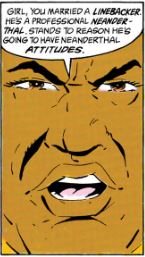 approach is what earned her success in the first place, and it’s interesting to see that it doesn’t change when dealing with her family. Even her daughter expresses concern over Waller’s threats towards the friendly apartment security guy. But this all tracks, given what we know of her backstory in Secret Origins. In the end though, Waller settles her family dispute on an amicable note. And if she can deal with her family, she can definitely take on Tolliver and his political ploys.
approach is what earned her success in the first place, and it’s interesting to see that it doesn’t change when dealing with her family. Even her daughter expresses concern over Waller’s threats towards the friendly apartment security guy. But this all tracks, given what we know of her backstory in Secret Origins. In the end though, Waller settles her family dispute on an amicable note. And if she can deal with her family, she can definitely take on Tolliver and his political ploys.
This issue also features some of Waller’s best insults and classic deadpan humor. Making her son-in-law a hulking linebacker is a hilarious decision, considering we’ve seen Waller stand up to the likes of Batman and The President. And though it’s not directly addressed, Sereetha’s childish antics make it clear that she’s the baby of the family. When things get tough, she runs back to her mom; it’s quite a stark difference between mother and daughter. By the end, Waller’s demeanor results in a respectful, “Yes, mama,” from Sereetha and her husband, ending any further arguments.
Suicide Squad #17-#18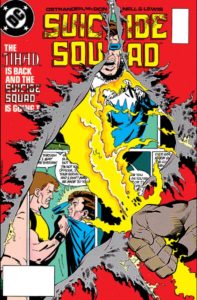
These next two issues feature the much anticipated return of The Jihad. Mirroring their introduction in Issue #1, the lack of dialogue allows their cold and calculated actions to speak for themselves. This time around, they’ve recruited a few new members who are surprisingly quite chilling. Agni, who controls fire, has little dialogue. However, his satisfaction after burning a subway car full of people is enough to take him seriously as a threat. But without a doubt, the creepiest recruit is Koschei the Deathless, whom we don’t actually see at all. Instead, they speak through their hivemind army of dead civilians, a horrific twist on classic supervillain mind-control.
But The Jihad are more than the cruel acts they commit towards innocents. Last time, they were presented as a mercenary group for hire. This time around, they’re working with a chip on their shoulders, punishing America for meddling in their countries’ affairs. This gives The Jihad and their actions a bit more context rather than being soulless mercenaries. In some ways, The Jihad and Suicide Squad are pretty similar. Both are rogue teams representing the interests of their respective countries and both are willing to do what they believe is necessary to achieve their goals. The Jihad could easily be the heroes of their own stories if this wasn’t a Suicide Squad book.
The actual brawl between the two teams is relatively uneventful, but it sets up some interesting plot threats. Ravan’s return was underwhelming, but his potential recruitment into the Squad could be a fun shakeup. Then there’s the surprising return of Mindboggler, who was presumed dead after Boomerang left her behind in Suicide Squad #2. She doesn’t do much, but she also doesn’t need to; the mere sight of her is enough to get Boomerang sweating bullets. Watching his selfish decisions catch up to him is fun, and something tells me his Mirror Master scheme won’t last long either.
Suicide Squad #19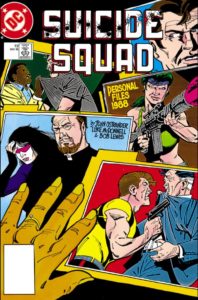
The great thing about fleshing out Belle Reve is that we get great issues like this one. It’s similar to Issue #8, except there’s a stronger focus on Waller’s management of the Squad during their off hours. This means we get significant appearances from the ground team as well. We even see their recruitment process when interviewing Dr. Light, a villain whom the warden dismisses as someone who “gets beat up by kids.” Each page oozes with personality while building 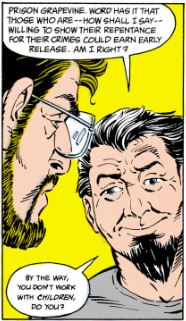 on smaller plot threads, making the issue feel less like filler and more like a necessary breather to understand where each Squad member is at.
on smaller plot threads, making the issue feel less like filler and more like a necessary breather to understand where each Squad member is at.
We also follow up on Nightshade and where she stands after failing to save her brother in Suicide Squad #15. It’s one thing to fail her life’s mission, but now she’s got a literal demon inside of her. Eve struggles to reconcile this with her faith, which is where Reverend Craemer comes in. His advice to trust in God’s mercy rather than fear his judgement is surprisingly touching and a nice conclusion to the rushed ending we get with the Nightshade Odyssey arc. But above all, this issue is a reminder that the Squad’s struggles don’t end when the mission is complete.
Suicide Squad #20
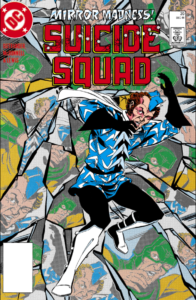
If the Suicide Squad were a tabletop role-playing game, Boomerang would be the traditional roguish archetype. He’s an opportunistic sleaze ball whose superpower is being perfectly fine with himself, and it’s on full display this issue. It’s not enough that he’s secretly using his dead friend’s alter-ego, Mirror Master, to rob banks under Waller’s nose, but he takes pride in it, too. And like most scoundrel-types, his decisions eventually blow up in his face when he gets caught by Manhunter. On his way to Belle Reve for processing as “Mirror Master,” Boomerang must put his motor-mouth to the test. And if there’s one person in the world you don’t want to play games with, it’s Amanda Waller.
Watching Digger frantically switch between Mirror Master and Captain Boomerang is a fun twist on secret identities. He even uses a hilariously fake American accent while dressed as Mirror Master. Ostrander has mentioned receiving flak from his Australian peers for Boomerang’s exaggerated Aussie accent, so it’s funny to see it subverted in this issue with Boomerang saying lines like, “Uh, I want muh lawyuh.” But beyond that, this issue answers the question of why a liability like Boomerang continues to remain on the Squad. Sure, he’s mostly competent with his boomerangs, but he’s also a confident coward, the easiest kind of personality for Waller to control and exploit. And the kicker? Everyone in the Squad already knows Boomerang is Mirror Master. Behind all the clever scheming, Boomerang gets played at his own game.
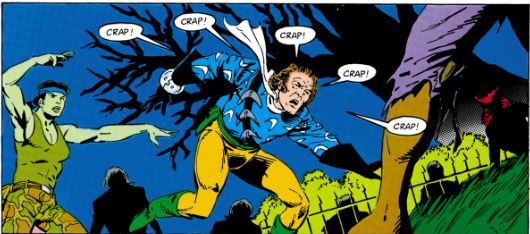
Suicide Squad #21-#22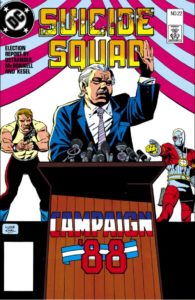
Blackmailed by Tolliver and President Reagan since Suicide Squad #14, Waller must now make a decision. She either uses the Squad to help Senator Cray get re-elected or Tolliver blows the lid off of the Squad’s existence and takes over as head of Task Force X. But after Waller digs up the necessary dirt on Tolliver, Flag unexpectedly goes rogue. Planning to kill Tolliver and Cray himself, the Squad must now stop their former field leader by any means necessary. Featuring two significant plot threads, these two issues have a lot of heavy lifting to do. Thankfully, Ostrander and McDonnell have proven to be great at pacing this series, resulting in a satisfying conclusion.
Waller’s “Checkmate” on Tolliver could have easily felt cheap, but it’s executed well and fits with what we’ve learned so far: You don’t mess with Amanda Waller. By now, it’s clear that Ostrander has had a strong grasp and voice for this character since the beginning, and her entire encounter with Tolliver is peak Amanda Waller. But quickly, we see that her tactics aren’t entirely foolproof either. Thanks to Waller’s distrusting nature, she fails to inform Flag that Tolliver and Cray have been dealt with. Flag, who’s gone AWOL, then goes rogue without the knowledge that Tolliver and Cray are already finished. What follows is an interesting twist where the Squad must now stop their field leader from screwing things up.
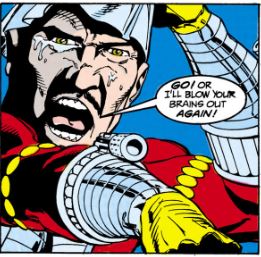
Though Flag is central to this story, it’s Deadshot who steals the issue. Floyd is initially among the members who are okay with killing Flag, but he takes a surprising turn at the end. Following Waller’s order to prevent Flag from killing Cray, Deadshot kills the senator himself, rather than shooting Flag like Waller expected. By this point in the series, Deadshot had become a fan favorite and had recently received his own four-issue miniseries (which you should absolutely read) that humanized him beyond being a cold-blooded assassin. Floyd’s decision here is a great way to further characterize him as morally gray, especially for those who may have missed out on his miniseries. If his popularity hadn’t skyrocketed to plot-armor immunity, Floyd’s sacrifice would have been the perfect send-off for ol’ Deadhead.
Suicide Squad #23
While the aftermath of the Invasion! (1989) crossover event must be addressed, this issue doesn’t waste the time of readers who may not have followed that event. Instead, the much more interesting aftermath of Suicide Squad #22 remains the focus. The consequences following that issue are directly related to Waller’s inability to trust anyone else but herself, and just about everyone on the Squad is realizing that. Waller’s methods are even pushing away members of the ground team. Simon LaGrieve’s frustration stands out because he was one of the members who trusted Waller the most, even leaving his old job to work with her at Belle Reve. Yet Waller not only disregards Simon’s professional advice, she spits in the face of everything he stands for as a psychiatrist, resulting in the Squad’s current predicament.
Of course, I couldn’t leave this issue without mentioning the first appearance of Oracle. For those unfamiliar, Oracle is the alter-ego of Barbara Gordon, a.k.a. Batgirl, after being paralyzed by The Joker in Alan Moore’s famous The Killing Joke (1988). Oracle’s identity isn’t a secret to anyone savvy with DC Comics lore, yet I still couldn’t help but get excited over the reveal. The fact that it’s not necessarily her first appearance, but rather an ominous hacker in the Belle Reve computer system, makes the reveal even more exciting. Oddly enough, it feels like finding an Easter egg in a DC Comics film.
Suicide Squad #24-#25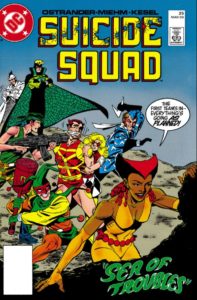
In the beginning, it could be argued that Amanda Waller was an anti-hero, someone willing to make difficult choices for the greater good. But with the absence of Rick Flag, her actions in these two issues have solidified herself as a true villain. And it’s not Batman or the Justice League that unveils her true nature, but rather the people who are closest to her. Heck, she even has a couple villainous smirks for good measure. It’s incredibly telling of her downfall that she’s able to intimidate Batman but not the likes of Simon LaGrieve and Nemesis. There’s a glimpse of this in Suicide Squad #21 when we’re introduced to Amanda Waller’s sister, Mary, who explicitly mentions not wanting to play along with Waller’s antics.
But of course, this is Amanda Waller we’re talking about, and she always has another card up her sleeve. In fact, during her entire court hearing, she looks like she’s biding her time to reveal what she’s really got planned. To the surprise of the Squad, Waller remains the head of Task force X and they’ve inadvertently helped her establish the Squad’s credibility with the successful completion of their mission in Africa. So in the end, Waller still gets what she wants and everyone is left a fool for believing she could be broken.

So the Squad’s existence is revealed, Waller takes her power game to the next level, and Oracle gets her first “appearance” in Suicide Squad #23. What could possibly happen next for our band of misfit metahumans? Find out in the next volume as we continue our romp through DC’s Island of Misfit Toys!
Suicide Squad
Credits
- Writers: John Ostrander, Kim Yale, Larry Ganem
- Artists: Luke McDonnell, Grant Miehm, Graham Nolan, Peter Krause
- Colorists: Carl Gafford, Matt Webb
- Letterers: Todd Klein, Helen Vesik
- Inkers: Bob Lewis, Timothy Dzon, Karl Kesel, Fred Butler
Credits (cont)
- Editors: Robert Greenberger, Joey Cavalieri
- Executive Editor: Joe Orlando
- Publisher: DC Comics


![[PODCAST] THE COMICS AGENDA: EVERYONE WAS KUNG-FU FIGHTING](https://geekd-out.com/wp-content/uploads/2017/11/comics-agenda-2-150x150.jpg)

![[REVIEW] GUARDIANS OF THE GALAXY #12](https://geekd-out.com/wp-content/uploads/2019/12/gotg-12-featured-150x150.png)